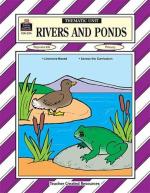|
This section contains 369 words (approx. 2 pages at 300 words per page) |

|
The transfer of energy from organism to organism forms a series called a food chain. All of the possible feeding relationships that exist in a biome make up its food web. In rivers and streams, as elsewhere, the food web consists of producers, consumers, and decomposers. These three types of organisms transfer energy within the biome.
Algae are the primary producers in rivers and streams. They produce organic materials from inorganic chemicals and outside sources of energy, primarily the Sun.
Animals are consumers. Those that eat only plants, such as snails, are primary consumers in the river or stream food web. Secondary consumers, such as carp, eat the plant-eaters. Tertiary consumers are the predators, like otters and anacondas, that eat second-order consumers. Humans are omnivores and eat both plants and animals.
Decomposers, which feed on dead organic matter, include some fly larvae. Bacteria also...
|
This section contains 369 words (approx. 2 pages at 300 words per page) |

|




